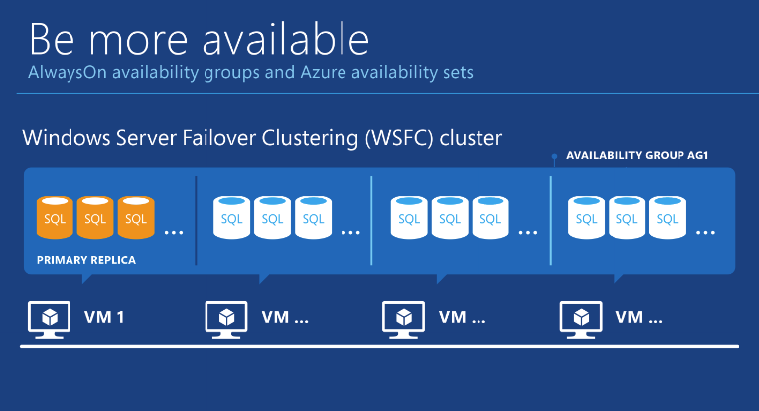This part covers the SQL Server installation and configuration for a SCCM 2012 R2 environment. SQL server will be installed on a dedicated server. (If SQL server is installed on the same server as the SCCM Primary Site, some steps are not necessary) Server: M-SQL1
Read More »SCCM 2012 R2 Environment Preparation Requirements
This article covers the installation on a SCCM 2012 R2 environment for Computer management (OS Deployment and Inventory). There are: One server for SQL and Reporting services One server for SCCM Primary Site One server for a secondary SCCM Management and Deployment Point (it will be used later for SUP roles and Application Catalog). All servers are installed with ...
Read More »AlwaysOn Availability Group Install SQL Server Core
SQL Server 2012/2014 AlwaysOn Availability Groups: Article Summary Part 1 – AlwaysOn Introduction Part 2 – AlwaysOn Design Part 3 – Install and Configure Windows Server 2012 R2 in Core mode Part 4 – WSFC Cluster Creation Part 5 – Install SQL Core on Windows Core Server Part 6 – AlwaysOn Availability Groups Creation Part 7 – AlwaysOn Availability Groups ...
Read More »AlwaysOn Availability Group WSFC Cluster Creation
SQL Server 2012/2014 AlwaysOn Availability Groups: Article Summary Part 1 – AlwaysOn Introduction Part 2 – AlwaysOn Design Part 3 – Install and Configure Windows Server 2012 R2 in Core mode Part 4 – WSFC Cluster Creation Part 5 – Install SQL Core on Windows Core Server Part 6 – AlwaysOn Availability Groups Creation Part 7 – AlwaysOn Availability Groups ...
Read More »AlwaysOn Availability Group Install WS2012 R2 Core Server
SQL Server 2012/2014 AlwaysOn Availability Groups: Article Summary Part 1 – AlwaysOn Introduction Part 2 – AlwaysOn Design Part 3 – Install and Configure Windows Server 2012 R2 in Core mode Part 4 – WSFC Cluster Creation Part 5 – Install SQL Core on Windows Core Server Part 6 – AlwaysOn Availability Groups Creation Part 7 – AlwaysOn Availability Groups ...
Read More »AlwaysOn Availability Group Design
SQL Server 2012/2014 AlwaysOn Availability Groups: Article Summary Part 1 – AlwaysOn Introduction Part 2 – AlwaysOn Design Part 3 – Install and Configure Windows Server 2012 R2 in Core mode Part 4 – WSFC Cluster Creation Part 5 – Install SQL Core on Windows Core Server Part 6 – AlwaysOn Availability Groups Creation Part 7 – AlwaysOn Availability Groups ...
Read More »AlwaysOn Availability Group Introduction
SQL Server 2012/2014 AlwaysOn Availability Groups: Article Summary Part 1 – AlwaysOn Introduction Part 2 – AlwaysOn Design Part 3 – Install and Configure Windows Server 2012 R2 in Core mode Part 4 – WSFC Cluster Creation Part 5 – Install SQL Core on Windows Core Server Part 6 – AlwaysOn Availability Groups Creation Part 7 – AlwaysOn Availability Groups ...
Read More »SQL Server 2012-2014 AlwaysOn Availability Group Series
This article will present the SQL Server 2012-2014 AlwaysOn Availability Group feature and describe how-to implement a virtualized AlwaysOn Cluster with four WS2012 R2 Core nodes and four Availability Groups. I will post later articles about Administration, Troubleshooting and Monitoring. All nodes will be Virtualized on Hyper-V 2012 R2 For the demonstration of AlwaysOn Availability Groups capabilities, the Cluster will ...
Read More »Replica is inconsistent in DPM 2012R2
Today I have installed and set Data Protection Manager 2012R2 (with Cumulative Update 2)for my client and when I have created a system state protection, I came across this error: The first known misconfiguration that raises this error is that Windows Server Backup feature is not installed on the protected server.
Read More »Fine-Grained Password Policy in Active Directory
Before Windows Server 2008, passwords were only managed via the Default Domain Policy GPO. So only one password policy was possible without do-it-yourself. With Windows Server 2008, Microsoft introduces Password Settings Object (PSO) that enables to apply Fine-Grained password policy linked to users or groups object. However in Windows Server 2008, PSO could only be created with PowerShell command. In ...
Read More »


